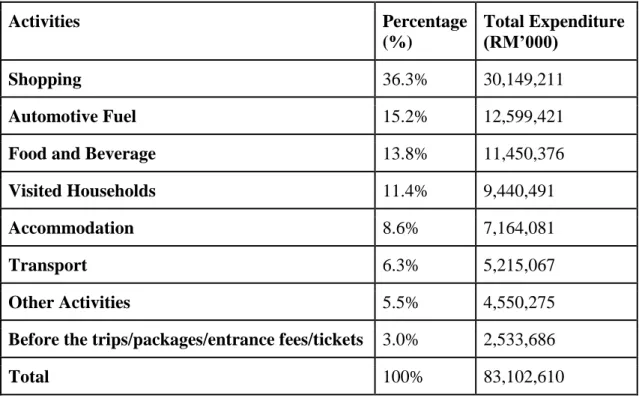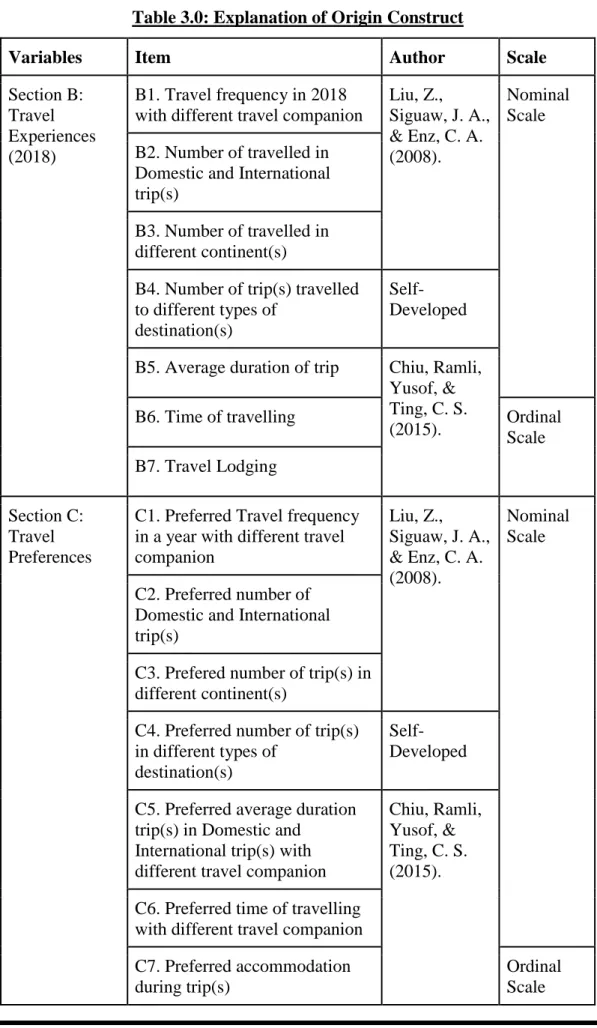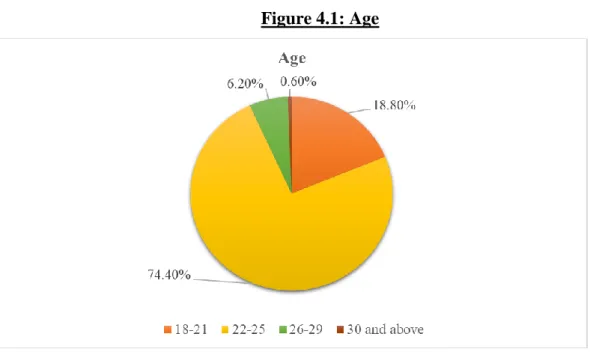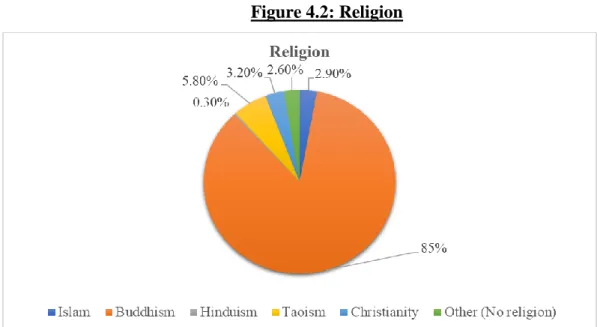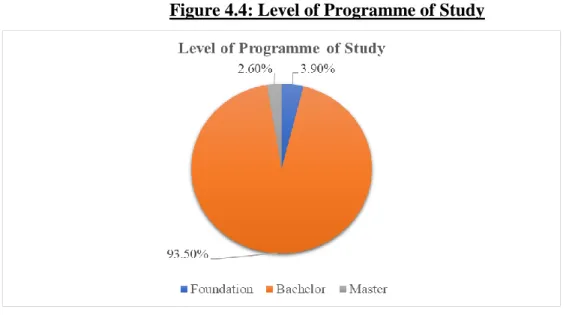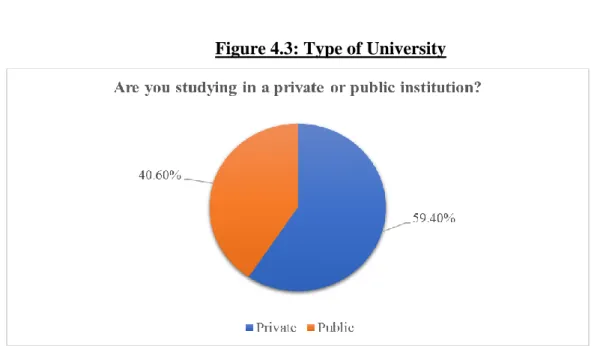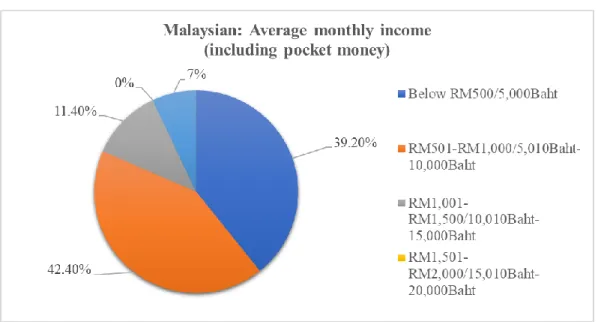First, we would like to dedicate this research project to our beloved and respectable promoter, Cik. Zufara Arneeda who provided us with valuable guidance and assistance during the completion of this research project. Finally, we would like to dedicate this research to all our dear friends for their unlimited help, support and invaluable feedback in making this research project a success.
RESEARCH OVERVIEW
- Introduction
- Research Background
- Malaysia Tourism Industry
- Thailand Tourism Industry
- University Student Travel Market
- Problem Statement
- Research Objectives
- General Objective
- Specific Objectives
- Research Questions
- Significance of Study
- Hypothesis of Study
- Conclusion
Also, most of the country on the list is an Asian country, except for Australia. Going through the comparative study of travel behavior and pattern between university students in Malaysia and Thailand will determine the comprehensive travel spending, travel transportation and social media pull factors of the tourism industry. The study's hypothesis will be tested in two sets of results coming from the university student from Malaysia and Thailand.
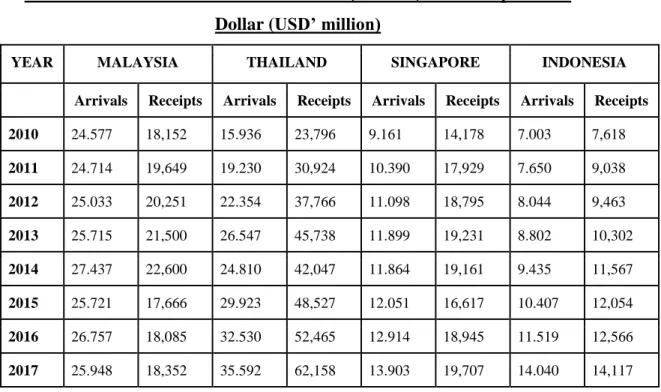
Literature Review
- Overview of the chapter
- Push-Pull theory
- Travel Behaviour and Pattern
- Dependant Variable: Travel Preferences
- Independent Variables
- Travel Expenditure
- Travel Transportation
- Social Media
- Hypothesis Development
- Relationship between Travel Expenditure and University Student Travel
- Relationship between Travel Transportation and University Student
- Relationship between Social Media and University Student Travel
- Conceptual Framework
- Conclusion
In general, travel behavior and pattern will change in some way due to personal travel preferences. According to Bay (2018), the overall results of the study show that the relationship between social media and travel activities is significant. Analysis of the study data shows that social media has a positive effect on consumer behavior.
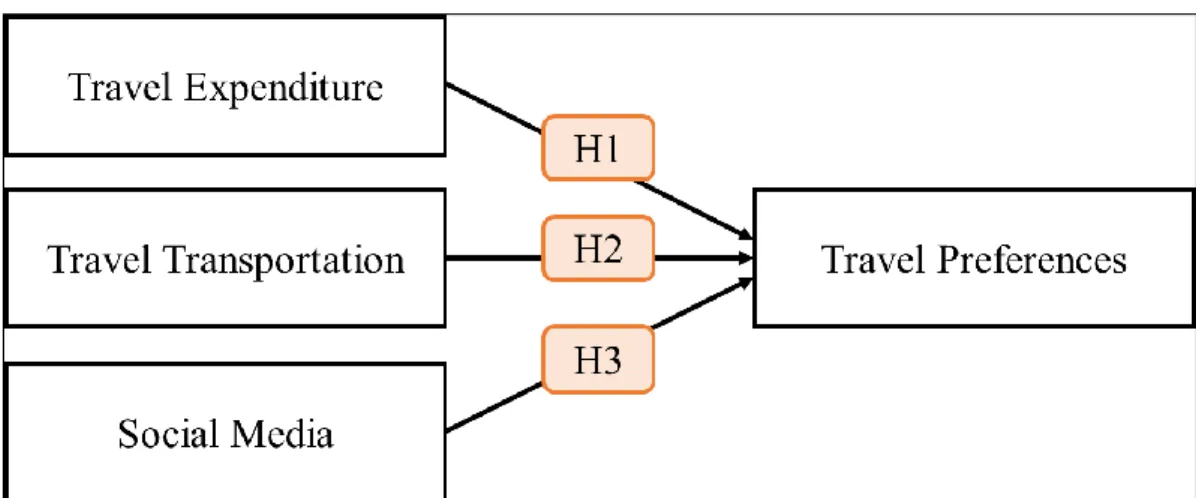
METHODOLOGY
- Introduction
- Research Design
- Causal research
- Quantitative research
- Data Collection Methods
- Collection of Primary Data
- Collection of Secondary Data
- Sampling Design
- Target Population
- Sampling Frame and Sampling Location
- Sampling Technique
- Sampling Elements
- Sampling Size
- Research Instrument
- Questionnaire Design
- Construct Measurement
- Nominal Scale
- Ordinal Scale
- Interval Scale
- Data Processing
- Questionnaire checking
- Data Editing
- Data Coding
- Data Transcribing
- Data Cleaning
- Proposed Data Analysis Tool
- Descriptive analysis
- Inferential analysis
- Conclusion
The objective of the questionnaire survey is to obtain information from university students in Malaysia and Thailand (respondents) about their travel experience in 2018 and to know the pull factors that will influence their travel preferences. The target population in this research study will be university students in Malaysia and Thailand who have travel experience in 2018 or travel preferences and age is over 18 years old. In this research, the location of the questionnaire sample is set in Malaysia and Thailand.
In other words, the questionnaire is randomly distributed to students currently studying in Malaysia and Thailand. In this research, closed questions will be an appropriate method to reduce response errors and will only require some time to answer the questionnaire. The questionnaire survey was distributed separately to students in Malaysia and Thailand who gained travel experience or have travel preferences in 2018.
In this study, the questionnaire survey is divided into 6 main sections and other 2 no sections. In this study, respondents will be asked how social media will influence their travel preferences using the interval scale. In this research, SPSS Statistic (Statistical Package for the Social Sciences) version 25 is used for the data analysis.
In the next section, we will discuss the data analysis tools used in this research, which included descriptive analysis and inferential analysis.
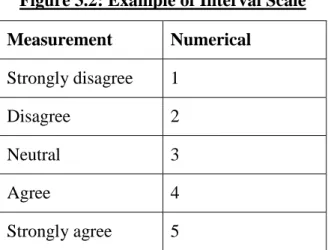
DATA ANALYSIS
Introduction
Descriptive Analysis
- Respondents Demographic Profile
- Gender
- Age
- Religion
- Type of University
- Education Level
- Income Level and Income Source (Malaysia vs Thailand)
- Malaysian travelled to Thailand
- Thai travelled to Malaysia
- Comparative Study
- Travel Experience (2018) & Travel Preferences
- Travel Expenditure
- Travel Transportation
- Social Media
- External Factors
See figure 4.6 above, shows that the average monthly income (including pocket money) of Thai respondents. For daily expenses, 55.80% of Malaysian respondents and 65% of Thai respondents receive money from their family. As shown in the above bar graph, 88.70% of the total Thai respondents have not traveled to Malaysia.
See Figures 4.11 and 4.12, which show that the number of trips for Thai respondents differs from their actual number. Most importantly, 75.30% of respondents in Thailand want to travel independently at least once. See Figures 4.13 and 4.14 which show that overall Malaysian respondents do not have a significant difference between actual and preferred number of domestic and international trips.
In addition, Table 4.1 shows that Malaysian and Thai respondents have a similar level of expenditure on each activity. In addition, due to the majority of respondents Malaysian and Thai are satisfied with each other's accommodation prices. There are 77.20% of Malaysian respondents and 84.70% of Thai respondents prefer to use airplane to reach their destination.
There are 39.30% of Thai respondents tend to use Agoda while 24.70% of Malaysian respondents tend to use TripAdvisor.
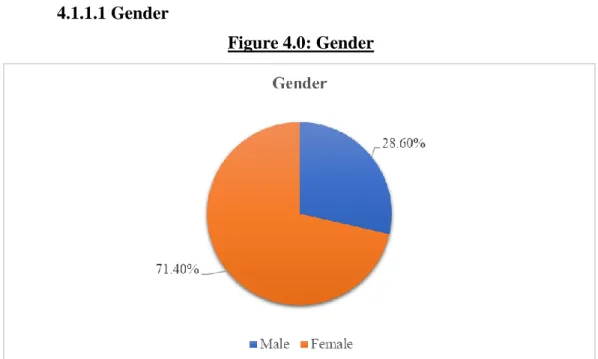
Inferential Analysis
- Multiple Linear Regression Analysis
Both the ANOVA table (Malaysia and Thailand) have the p-value is less than and 0.000), which means that the regression model generally predicts the outcome variable statistically significantly. From Table 4.7, the independent variables are: Travel expenditure makes a significant unique contribution to the expectation of travel preferences, where the P-value is less than. However, the significant value for transportation (0.097) is greater than 0.05 significant level and social media (0.146) is greater than 0.10 significant level.
From Table 4.8, the independent variables: transportation and social media make a significant unique contribution to the expectation of travel preferences, with a P-value of less than. On the other hand, the significant value for travel expenditure (0.109) is greater than the 0.10 significance level.
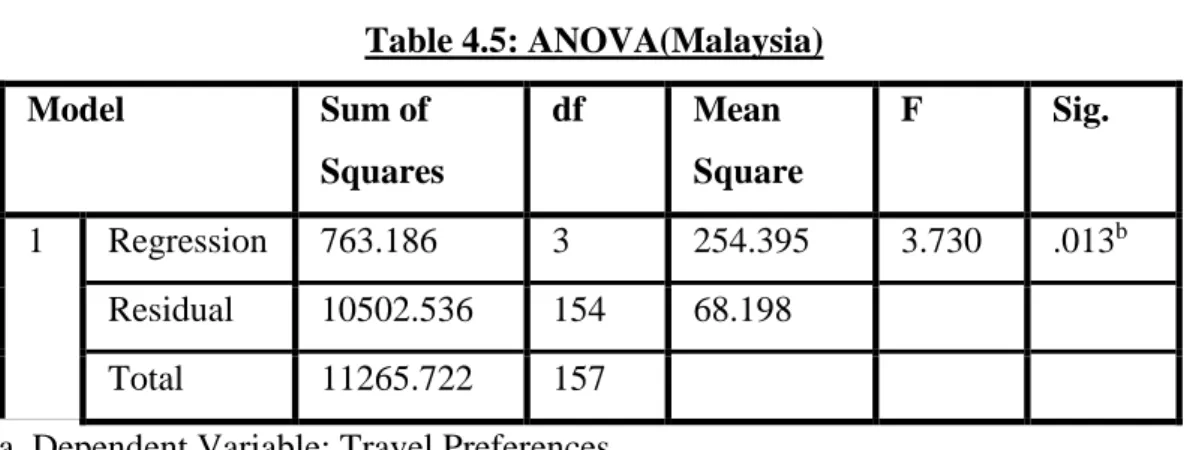
Hypotheses Testing
- Malaysia University Students
- Thailand University Students
On the other hand, the p-value of travel transportation and social media is equal to 0.000, which is less than 0.05 and indicates high significance. Thus, there is a significant relationship between travel transportation and travel preferences and also a significant relationship between travel transportation and travel preferences.
Summary of Hypothesis Testing Results
Conclusion
DISCUSSIONS, CONCLUSION AND IMPLICATIONS
Introduction
Summary of Statistical Analysis
- Summary of Descriptive Analysis
- Demographic Profile of Respondents
- Summary of Inferential Analysis
- Multiple Linear Regression
- Hypothesis Testing
Most of the respondents are from the under 25 age group, which make up a total of 229 respondents (108 Malaysian and 121 Thai). All Malaysian respondents are Malaysian university students currently studying in Malaysian university and most of them are in private institution. On the other hand, all Thai respondents are Thai university students who are currently pursuing Bachelor in Thai university and most of them are in public universities.
Based on the income level, most of the Malaysian respondents have less than RM1,000 per month while most Thai respondents have above RM1,000 per month. But the main source of income of them is similar and comes from their family. Finally, there are 126 out of 158 Malaysian respondents who have traveled to Thailand and only 17 out of 150 Thai respondents who have traveled to Malaysia.
Discussion of Major Findings
- Travel Expenditure
- Travel Transportation
- Social Media
For example, most respondents from Malaysia have an average domestic tourism expenditure below RM1,000. From Table 5.1, we can see that the significance level of travel transportation for Thai university students is about 0.000, which is less than 0.05. In addition, the travel preferences of the respondents in Thailand will significantly influence the travel transportation of travel destinations.
Shoham et al. 2005) argued that the student's travel preferences regarding the mode of transport used to travel around or reach the destination will influence the student's nationality. According to Babin and Kim (2001), international students' awareness of the safety of the travel destination, travel experiences and travel motives will continue if there are no concerns about security issues. From Table 5.1, we can see that the social media significance level for university students in Thailand is about 0.000, which is less than 0.05.
The travel preferences and travel decisions of respondents in Thailand were influenced by information obtained from social media. As stated in a study by Bay (2018), social media is positively relevant to tourist behavior. Respondents in Thailand get information from suggestions from friends, the internet, and are noticed through social media, as do respondents from Malaysia.
A study by Varasteh, Marzuki, and Rasoolimanesh (2015) shows that the Internet and friends' recommendations regarding the travel destination are the main sources of international students during travel planning.
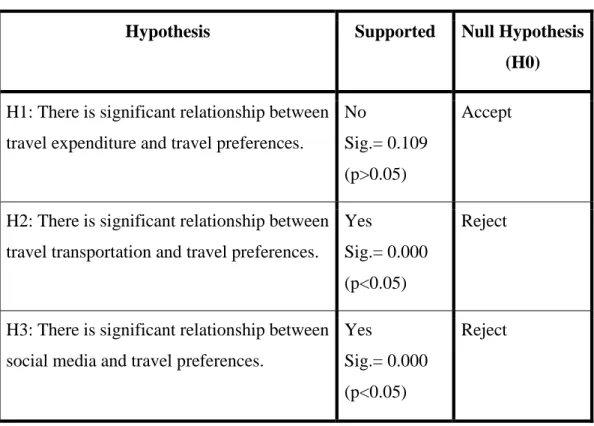
Managerial Implication
According to Mammadov (2012), the country should be concerned about these elements in order to improve the image of transportation and develop the transportation system to attract more foreign tourists. There are competitive transport rates, region-specific transport modes, well-trained personnel, financial support for transport development, such as building better infrastructure and increasing connectivity between destinations and attractions in urban and rural areas. For social media, the research contributes to the level of social media adoption during the travel planning process of the respondents.
It is clear that respondents' travel preferences and behavior will be influenced by the information provided by social media. Therefore, electronic word of mouth will be the area that the marketer needs to pay attention to. This is because respondents are more likely to get a suggestion from their friends and the internet.
So, travel agency and ministry of tourism can spread the tourism information and program through social media such as advertising video, top 10 destinations in Malaysia and so on to influence and attract domestic and foreign tourists. In conclusion, it will attract the domestic and foreign university student to travel in Malaysia and strengthen the intention to visit again.
Limitations of the Study
Recommendation of the Future Research
Conclusion
The Effects of Tourism Information Quality in Social Media on Destination Image Formation: The Case of Sina Weibo. 34; Travel Behavior and Pattern of University Students: Comparative Study of Malaysia and Thailand." The objective is to analyze factors such as travel expenses, transportation, social media that influence the travel patterns of university students. This questionnaire will take about 10 to 15 minutes complete Please rate the following level of satisfaction with tickets and entrance fees (1=Very Dissatisfied, 5=Very Satisfied).
Please rate the following level of satisfaction with food and beverage charges (1=Very Dissatisfied, 5=Very Satisfied). Quality of public transport services in the following countries (a) Malaysia (Please rank as follows, 1=lowest, 5=highest). Please evaluate the following sources of information that you use when you go on a trip.
Please tick one in the appropriate box to indicate the extent to which you agree or disagree with the following statement. a) I am influenced by positive comments about the holiday destination on social media. I use social media to search and after choosing a destination I have an actual travel plan. f) I use social media to search for travel. g). FACULTY OF ACCOUNTING AND MANAGEMENT GRADUATE IN INTERNATIONAL BUSINESS (HONS) Travel Behavior and Pattern of University Students: A Comparative Study of Malaysia and Thailand.
34; Travel Behavior and Pattern of University Students: A Comparative Study of Malaysia and Thailand." The objective is to analyze the factors such as travel costs, transportation, social media that affect the travel patterns of university students. The quality of public transport services in the following countries (d) Malaysia (classify next, 1=lowest, 5=highest).
